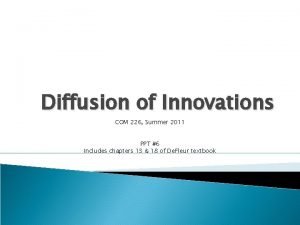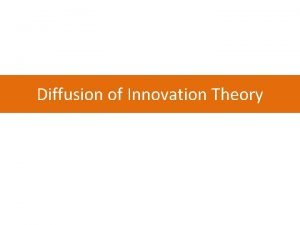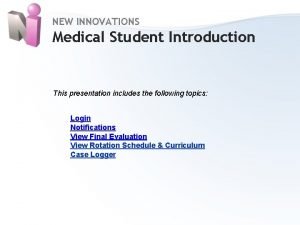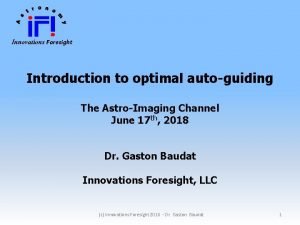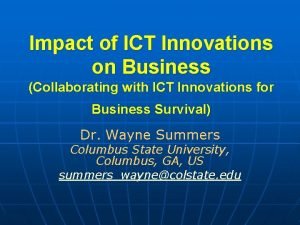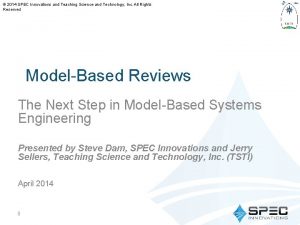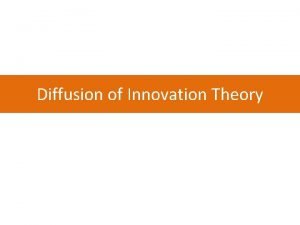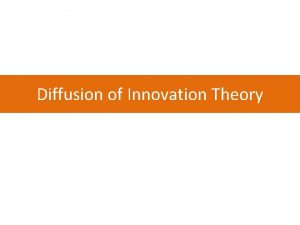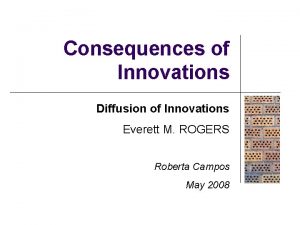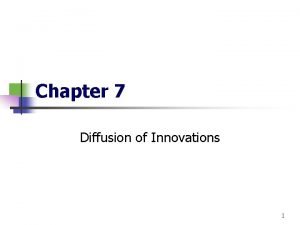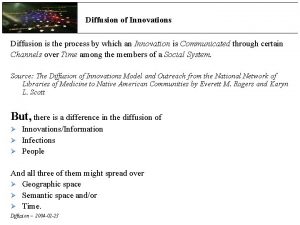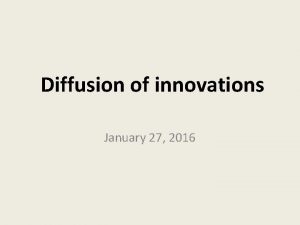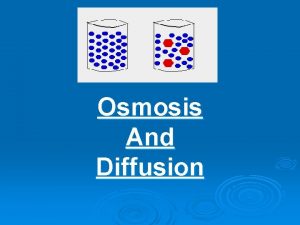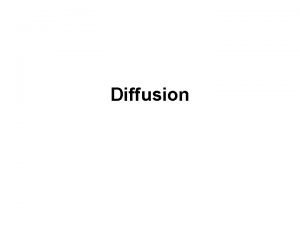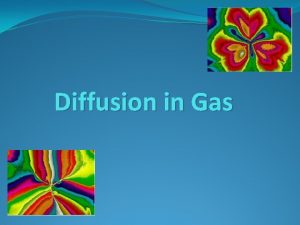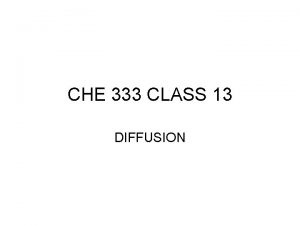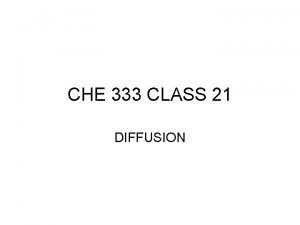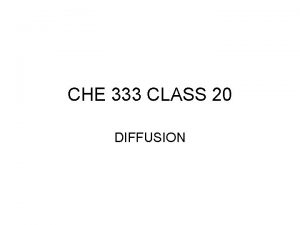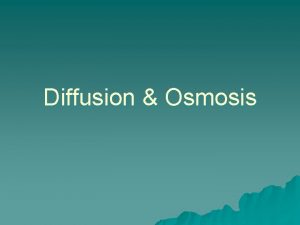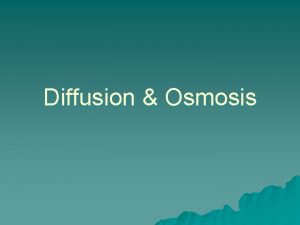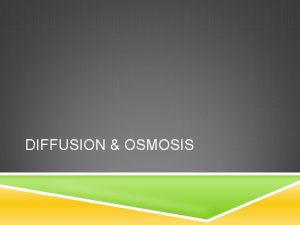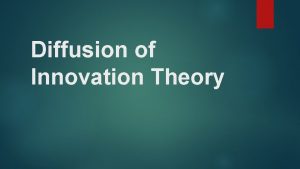Diffusion of innovations theory Diffusion of Innovations 5




















- Slides: 20

Diffusion of innovations theory Diffusion of Innovations. 5 thed. New York: Free Press, 2003. Author: Rogers, Everett M. 指導教授: 戴敏育老師 報告者(依報告順序): 淡江資管所碩專一 朱芝琬 淡江資管所碩專一 李坤達 報告日期: 2011. 3. 26

Diffusion of innovations theory n Acronym n n DOI Alternate name(s) n Innovation Diffusion Theory (IDT)

Seminal articles n n n Lazarsfeld, P. F. , Berelson, B. & Gaudet, H. (1949). The people’s choice: How the voter makes up his mind in a presidential campaign. New York: Columbia University Press. Rogers, Everett M. (1962). Diffusion of Innovations. The Free Press. New York. Rogers, Everett M & Shoemaker, Floyd F (1971). Communication of Innovations: A Cross-Cultural Approach (2 nd ed. ). New York: The Free Press. Rogers, Everett M. Diffusion of Innovations. 4 thed. New York: Free Press, 1995. Rogers, Everett M. Diffusion of Innovations. 5 thed. New York: Free Press, 2003.

Diffusion of innovations theory n Main dependent construct(s)/factor(s) n n n Implementation Success Technology Adoption Main independent construct(s)/factor(s) n n n Compatibility of Technology Complexity of Technology Relative Advantage

Diffusion of innovations theory n Concise description of theory n DOI theory sees innovations as being communicated through certain channels over time and within a particular social system n Individuals are seen as possessing different degrees of willingness to adopt innovations and thus it is generally observed that the portion of the population adopting an innovation is approximately normally distributed over time

Diffusion of innovations n innovators, early adopters, early majority, late majority, laggards n innovators - venturesome, educated, multiple info sources n early adopters - social leaders, popular, educated n early majority - deliberate, many informal social contacts n late majority - skeptical, traditional, lower socioeconomic status n laggards – neighbours and friends are main info sources, fear of debt


Diffusion of innovations theory n The rate of adoption of innovations is impacted by five factors relative advantage n compatibility n trialability n observability n complexity n

Diffusion of innovations theory n The first four factors are generally positively correlated with rate of adoption while the last factor, complexity, is generally negatively correlated with rate of adoption

Diffusion of innovations The process by which an innovation is communicated throu gh certain channels over time among the members of a social system (Rogers, 1995, page 5) n Innovation is an idea, practice, or object that is perceived as new by an individual or other unit of adoption (Rogers, 1995, page 11) n

IS diffusion variance model(1) Technical Compatibility Technical Complexity (Ease of Use) IS Implementation Success (Adoption, Infusion) Relative Advantage (Perceived Need) from: Agarwal and Prasad (1998) A conceptual and operational definition of personal innovativeness in the domain of information technology. Information Systems Research

IS diffusion variance model(2) n 依變數 : IS Implementation Success(Adoption, Infusion) n 獨立變數 Compatibility of Technology Complexity of Technology Relative Advantage (Perceived Need)


IS diffusion variance model(4) n Relative advantage (相對的優點): 若新 事物優於舊事物,則較快被採用。 n IS Implementation Success(資訊系統 實行的成功)

Originating author(s) n Lazarsfeld et. al. (1949) n Rogers, Everett M. (1962) n Rogers and Shoemaker (1971) n Rogers, Everett M. (1995)

Originating area Anthropology n Sociology n Education n Communication n Marketing and Management n Geography n Economics n

Level of analysis Group n Firm n Industry n Society n

Reference Agarwal, R. , & Prasad, J. (1998). A conceptual and operational definition of personal innovativeness in the domain of information technology. Information Systems Research, 9(2), 204 -215. n Rogers, Everett M. Diffusion of Innovations. 4 thed. New York: Free Press, 1995 n

Reference n http: //en. wikipedia. org/wiki/Diffusion _of_innovations n http: //www. fsc. yorku. ca/york/istheory /wiki/index. php/Media_richness_theo ry

 Facilitated diffusion
Facilitated diffusion Contagious diffusion diagram
Contagious diffusion diagram Diffusion of innovation ppt
Diffusion of innovation ppt Innovation diffusion theory
Innovation diffusion theory Russian empire architecture 1450 to 1750
Russian empire architecture 1450 to 1750 Sls login
Sls login New-innov
New-innov Lucent technologies bell labs
Lucent technologies bell labs Innovation foresight
Innovation foresight Ict innovations for business
Ict innovations for business Lesson 4 cultural innovations
Lesson 4 cultural innovations Muslims learned a new way to write numbers from
Muslims learned a new way to write numbers from New innovations duty hours
New innovations duty hours Next level innovations
Next level innovations Marketing real people real decisions
Marketing real people real decisions Lightweight innovations for tomorrow
Lightweight innovations for tomorrow Muslim innovations and adaptations
Muslim innovations and adaptations Innovations in modern banking
Innovations in modern banking Spec innovations
Spec innovations Wins soft innovations private limited
Wins soft innovations private limited Crea energy innovations summit
Crea energy innovations summit


